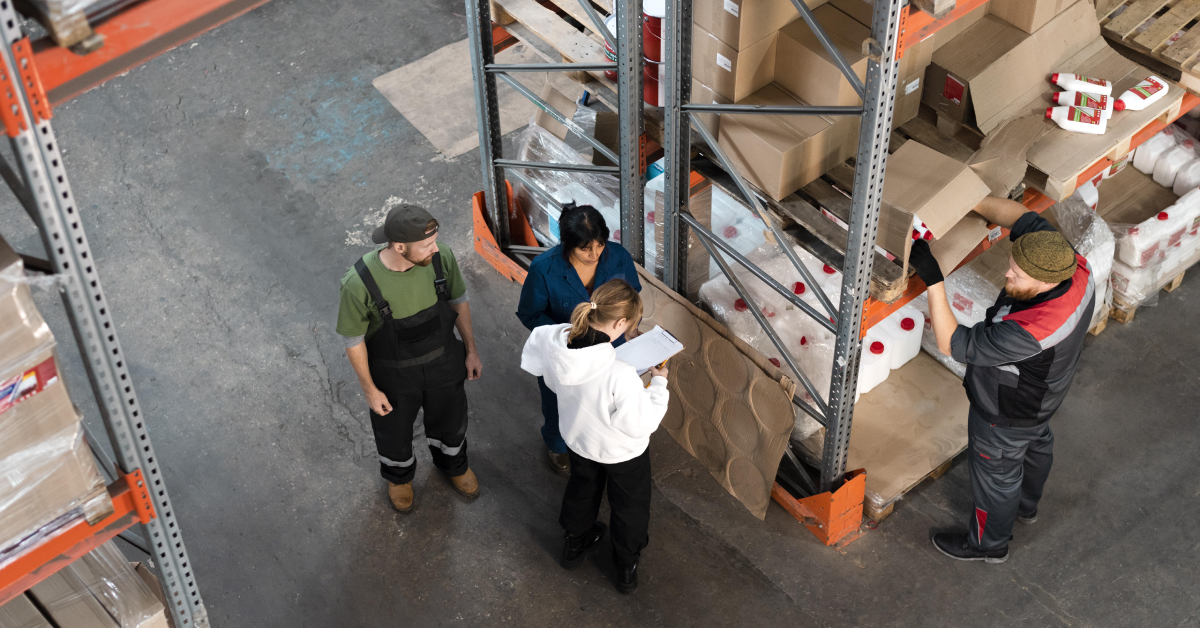Choosing between Fulfillment by Amazon (FBA) and Fulfillment by Merchant (FBM) might seem like a straightforward pricing decision, but there’s more to it than just the obvious fees. Beneath the surface, there are sneaky costs—like storage penalties, prep charges, or labor overhead—that can quietly chip away at your margins.
In this blog, we’re diving deep into the less-visible expenses behind FBA and FBM. We’ll highlight what sellers often overlook when figuring out true profitability, how a mix of both methods could benefit your business, and practical tools and tips to help you manage fulfillment smarter.
A Quick Overview: FBA and FBM
Fulfillment by Amazon (FBA)
With FBA, you ship your products to Amazon’s fulfillment centers, and from there, they handle everything—storage, packing, shipping, returns, and customer service. It’s a go-to option for sellers looking for ease and access to Amazon Prime buyers.
But that simplicity comes with trade-offs. Beyond the clearly listed fees, you’ll find unexpected expenses—especially if you’re not paying close attention to how your inventory is managed.
Fulfillment by Merchant (FBM)
FBM puts the ball in your court. You take charge of storage, shipping, and customer support. While this means more hands-on work, it also gives you greater control over operations and potential savings—especially if you already have logistics in place.
However, managing everything yourself can get overwhelming as your business scales. The key challenge? Keeping things efficient without compromising service.
What Sellers Often Overlook: Hidden Costs of FBA
FBA’s fee structure looks clean on paper, but there’s plenty in the fine print that can throw off your calculations.
1. Rising Storage Fees
Amazon charges for storage based on the space your products take up—and those rates climb during high-demand seasons. On top of that, products sitting too long in the warehouse rack up long-term storage fees, quickly turning slow-movers into liabilities.
2. Paying to Remove or Destroy Inventory
If a product isn’t selling, you’ll either pay to have it returned or disposed of. It’s not just about lost sales—you’re also covering fees to clear out space.
3. Packaging and Labeling Costs
Amazon expects inventory to arrive packaged and labeled according to its guidelines. Miss a step, and they’ll take care of it—for a price. If you’re selling a wide range of products, these small fees can start to snowball.
4. Lost or Damaged Goods
Inventory can go missing or get damaged in Amazon’s warehouse. While Amazon usually reimburses sellers, the process isn’t always seamless—and the payout might not cover the true value of the loss.
5. Expensive Returns
Amazon’s return system is convenient for shoppers, but it often hurts sellers. Products are refunded before being inspected, and if the item comes back damaged, you may be stuck with the loss.
FBM’s Hidden Operational Costs
FBM puts you in control, but that freedom brings its own set of challenges—especially if your systems aren’t well-oiled.
1. Time and Labor
Managing fulfillment internally means someone—maybe even you—is spending time packing orders, organizing shipments, and replying to customers. As orders grow, so does the need for extra help and better processes.
2. Higher Shipping Costs
FBM sellers usually don’t get access to Amazon’s bulk shipping discounts. To stay competitive on delivery speed, you may end up spending more per shipment.
3. Storage and Inventory Management
Even if you have your own space, warehousing costs money. Whether it’s rent, shelving, or software, those expenses add up. Without a proper inventory system, tracking stock levels and avoiding overselling can be a struggle.
4. Customer Support
All inquiries, complaints, and return handling fall on your shoulders. Keeping up with messages while running other parts of the business can become overwhelming during peak seasons.
Key Factors to Consider Before Choosing
There’s no one-size-fits-all approach to fulfillment. Here are some things to think about:
-
Sales Volume – Higher volume typically favors FBA’s scalability. Lower volume sellers may benefit more from FBM’s flexibility.
-
Product Type – Bulky or fragile items might be cheaper to handle yourself, while lightweight products may benefit from FBA’s fast delivery.
-
Margins – If your margins are already tight, FBA’s fees could put a serious dent in profits.
-
Customization – Want to include promotional inserts or custom packaging? FBM gives you that freedom.
Hybrid Fulfillment: Blending FBA and FBM
For many sellers, a mix of FBA and FBM offers the best of both worlds. You’re not locked into one method—you can switch based on what makes sense for each product or season.
A common hybrid strategy might look like this:
-
Use FBA for fast-moving or small items that qualify for Prime.
-
Handle heavy or slow-moving products with FBM to avoid storage costs.
-
Shift fulfillment methods based on seasonal demand or changes in shipping rates.
This blended approach can help you balance costs and control without overcomplicating operations.
How to Manage a Hybrid Setup Efficiently
Running both fulfillment models at once takes planning and the right tools. Here’s how to stay organized:
Smart Tools for Sellers
-
Inventory Management – Tools like Versa Cloud ERP, Skubana, and RestockPro let you track inventory across multiple channels.
-
Shipping Management – Platforms like ShipStation or ShippingEasy streamline order handling for FBM.
-
Analytics – Sellerboard and Helium 10 offer detailed breakdowns of fees, profitability, and return rates.
-
Automation – Apps like InventoryLab can help automate labeling and shipping prep across both FBA and FBM channels.
Cost Tracking & Profit Optimization Tips
When hidden costs go unchecked, they quietly drain profits. Here’s how to stay ahead:
1. Know the True Cost Per Product
Don’t rely on averages. Break down your expenses for each SKU—including storage, shipping, returns, and labor—to see what’s really profitable.
2. Watch Inventory Age
Products stored too long in Amazon’s warehouses become expensive. Keep tabs on inventory age and consider running promotions or switching fulfillment methods before hitting long-term storage thresholds.
3. Use Amazon’s Fee Preview
Before committing to FBA, run products through the Fee Preview tool. It gives a clearer view of the costs you’ll incur so you can price accordingly.
4. Run Test Batches
If you’re unsure which method works better for a product, test it. Send a small batch through FBA and keep the rest in-house with FBM. Compare the results before scaling.
5. Track and Analyze Returns
Returns are part of the game—but if some products are coming back more than others, look into why. It could be a red flag worth addressing or a sign to move those products to FBM where you can handle returns more closely.
Understanding Fulfillment Costs: FAQs
Is FBA better for new sellers?
FBA can simplify things, but new sellers should watch fees closely. It’s easy to underestimate the true cost when just starting out.
What fees are often missed with FBA?
Long-term storage, removal charges, prep service fees, and refunds on damaged returns are commonly overlooked.
Can I mix FBA and FBM?
Yes, and many successful sellers do. It offers more flexibility and helps you respond better to changes in demand or costs.
How do I know which method to choose?
Consider your products, available time, shipping capabilities, and margin expectations. Sometimes testing both methods is the best way to find out.
Final Thoughts: Make Fulfillment Work for You
There’s no universal “best” choice between FBA and FBM—it really comes down to your goals, product mix, and resources. Some sellers find success with the speed and scale of FBA, others thrive with the control of FBM. And many find a balance using both.
The most important thing? Keep a close eye on your costs, be willing to test and adapt, and always know where your profits are going. When you have that level of insight, fulfillment stops being a guessing game and starts driving your business forward.
Learn more about how Versa Cloud ERP and Amazon FBA and FMA integration
Take the First Step Towards Transformation
By taking a collaborative approach, Businesses can build a culture of continuous improvement and achieve sustainable operational efficiency without overwhelming your team or disrupting your business.
Don’t let inventory challenges hold your business back. Discover the Versa Cloud ERP advantage today.
Effectively manage your accounting, financials, multiple channel inventory, and production workflows with our award-winning ERP.
Let Versa Cloud ERP do the heavy lifting for you.
Do Business on the Move!
Make your businesses hassle-free and cut the heavyweights; sign up for the Versa Cloud ERP today!!
Join our Versa Community and be Future-ready with us.










